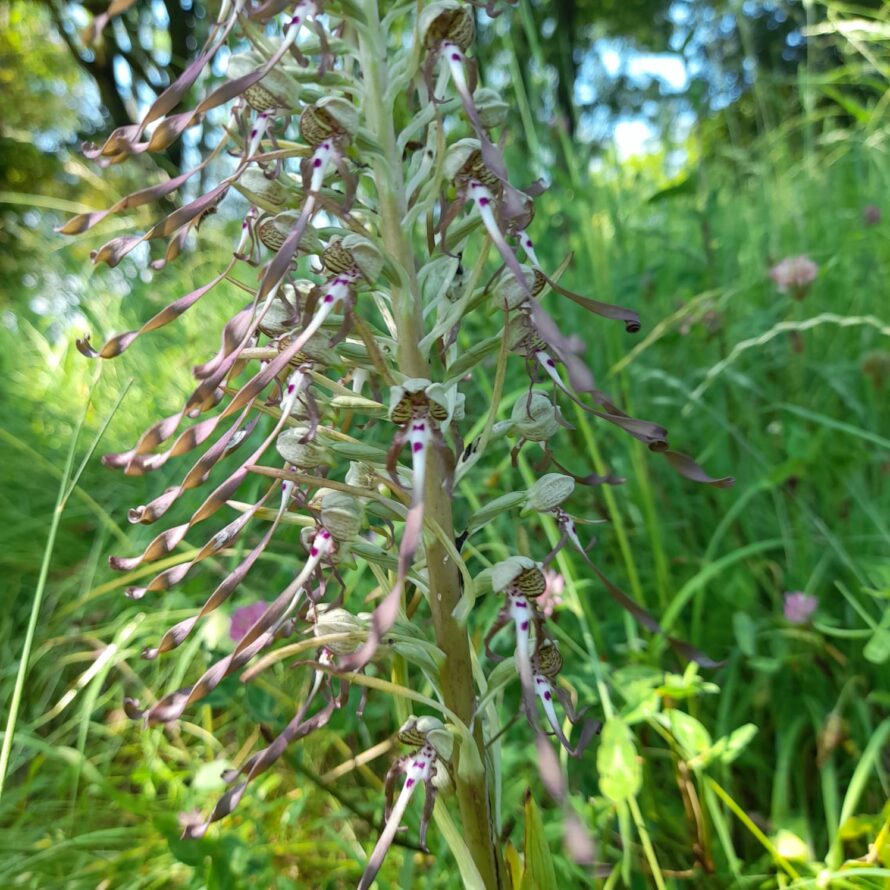Suggestions
Grounds Maintenance, Landscape Creation, Arboriculture, Sports Surfacing, Parks management, IOS Managing Safely Training, Ecology & Biodiversity, Grass cutting, Horticulture, Street Cleaning, Soft Landscaping, Hard Landscaping
Our Services
idverde provides a wide range of green services, including grounds maintenance, landscape creation, and advice services, to both private and public sectors across the UK.
Bromley Council’s Nature Friendly Verge Trial
The London Borough of Bromley, working with its parks management and grounds maintenance contractor idverde and supported by the RSPB, has completed a two-year Nature Friendly Verge Trial. The trial introduced a new treatment regime for specially selected roadside verges and assessed the effects on their biodiversity.
Please find out more and continue reading below,..
More projects for The London Borough of BromleyReasons For The Trial
Britain’s road verges cover an area the size of Dorset and are being recognised increasingly as crucial habitats for vanishing wildflowers and pollinators. The UK has lost more than 97% of its wildflower meadows since the 1930s and studies suggest almost half of the country’s native wildflower species now occur on verges with some species completely dependent on them.
As London’s greenest borough, Bromley has verges that are potentially even more ecologically valuable because they are close to large areas of rich habitats such as parks, woodlands and meadows so they can act as wildlife corridors between them.
In a letter of support for the trial, RSPB Head of Business Conservation Strategy, Nigel Symes, said that in addition to creating wildlife corridors, an alternative management of the verges could help achieve the Government target of 30% of land managed for nature by 2030. It could lead to reduced carbon emissions, improved carbon storage and air quality, noise buffering, moisture retention and increased biodiversity.
Management of grass verges is an issue on which public opinion is divided. Some people feel, for example, that if verges are not neatly trimmed an area looks run down and litter is encouraged. Others feel that the benefits for nature are significant and that wildflowers are an attractive feature.
How The Trial Was Managed
A Council working group considered the options for managing grass verges in the borough and recommended a two-year trial of the nature-friendly approach at 11 sites. Verges on the selected sites were managed more like hay meadows; cut and collected just once a year in the Autumn. A method known as ‘picture-frame’ or ‘letterbox’ cutting was implemented on the verge edges to keep pavements clear and retain safety sight lines where necessary, with the cut height no less than 5cm to protect invertebrates.
The reason for removing clippings is that they create a thick thatch, inhibiting wildflower growth and increasing soil nutrient levels to the benefit of more vigorous grasses which can take over, adding to on-going management costs and affecting the safety of the highway.
Before the trial began, there were explanatory letters to residents, public meetings and signage erected on the chosen verges. Residents were invited to take part in a survey seeking their responses.
What Happened Next
Ben Jarvis, idverde Biodiversity Manager at Bromley, reported the results of the new cutting regime varied between the locations and areas of different soil composition. Those on calcareous soil showed a greater diversity of wildflowers, including orchids, whereas others around the borough were less diverse but still showed improvement year on year. He said the trial had been a success for biodiversity and pollinators but public opinion remained divided. He hoped that a decision to make permanent nature friendly verges and future extensions of trial sites would help familiarise people with the sight of long grass areas. He also hoped interpretation and education would slowly win people over, culminating in more sites being managed in a way that supported biodiversity.
The idverde biodiversity team conducted walkover surveys on the trial sites, recording 80 different flora species in the first year. The second year’s surveys showed a positive increase in diversity with 113 flora species. A few verges showed little or no increase but in others there was a marked rise in diversity. Highlights included five types of orchids – including the nationally notable Lizard Orchid & the Cinnabar moth, which is a priority species in London as well as the Marbled White butterfly.
The trial report stated that most sites were achieving the goals set: Creating good wildlife corridors, increasing floral diversity and providing food for pollinators. A few of the verges were less productive and the report suggested that, should the trial be extended and expanded, some of the existing flower rich verges in the borough could be added.
Backed by a Butterfly Conservation study over six years which found that long grass locations in urban areas showed an increase of butterfly numbers by 18%, the report concluded that long grasses on Bromley verges created wild spaces which could help reverse the decline of insects and the other species that rely on them.

As recommended in the report, Bromley Council agreed to make the use of nature friendly management regimes permanent on eight of the original 11 trial verges and add six new sites to the programme.
The RSPB and idverde are pleased with the results of this trial and would be keen to see similar verge management across other contracts. If you are interested in finding out more about this trial, please contact us.
Case study by Vicky Banham, volunteer
